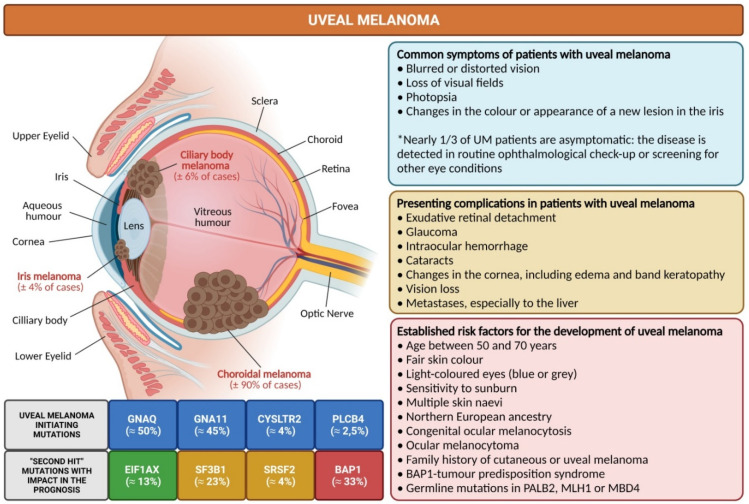Figure 1.
Overview of key facts in uveal melanoma, the most common intraocular primary malignant tumour in adults. Different risk factors are associated with the development of uveal melanoma. The choroid is the most frequent intraocular site of uveal melanoma development, which is detected in routine ophthalmological exams in asymptomatic patients. However, the majority of uveal melanoma patients present with symptoms, such as blurred vision or photopsia. Metastases, especially to the liver, occur in nearly 50% of patients during the first 10 years after diagnosis, but constitute a presenting symptom in only a small fraction of patients (<2%). In the carcinogenic process of uveal melanoma, several tumour-initiating and tumour-promoting mutations have already been identified and characterized. Uveal melanoma patients with mutations in BAP1 (highlighted in red) have been demonstrated to have the worst outcome, while patients with EIF1AX (highlighted in green) have a better prognosis and patients with SF3B1/SRSF2 (highlighted in orange) have an intermediate prognosis. Diagram generated in line with previous literature [1,2,3,9,22,25,26,27,36,37,38,39,40] (Diagram created with BioRender.com, accessed on 15 December 2021).

